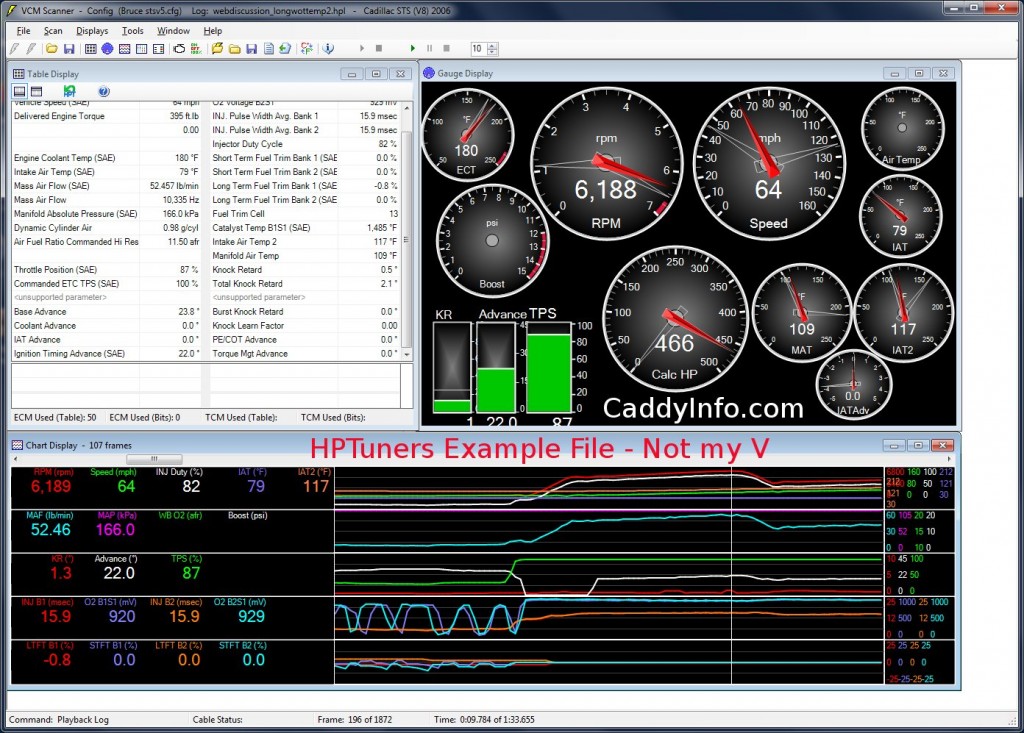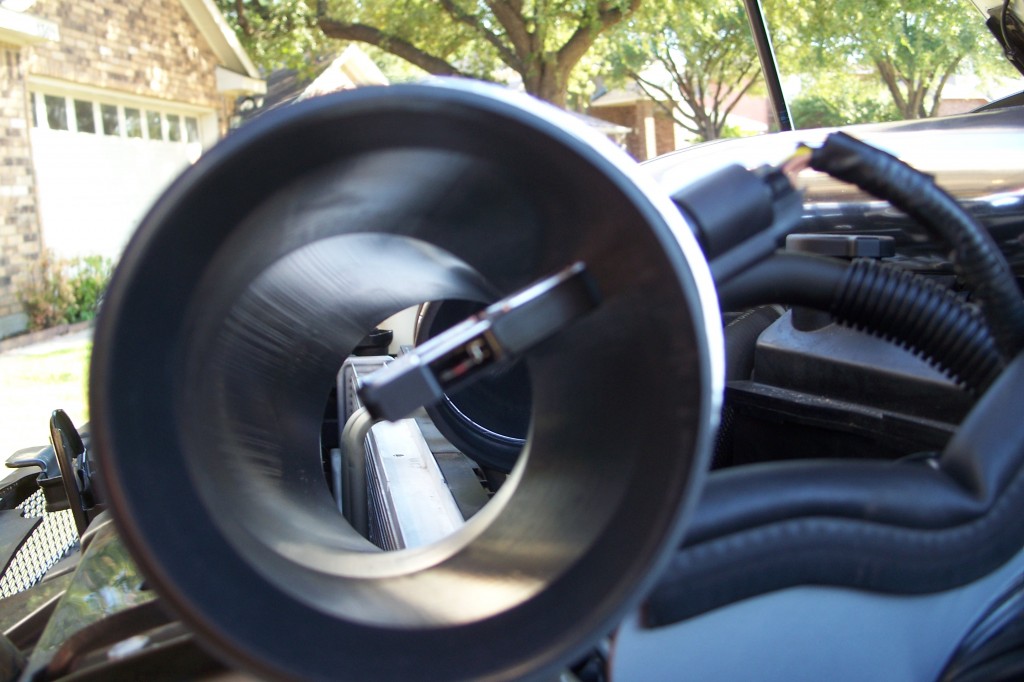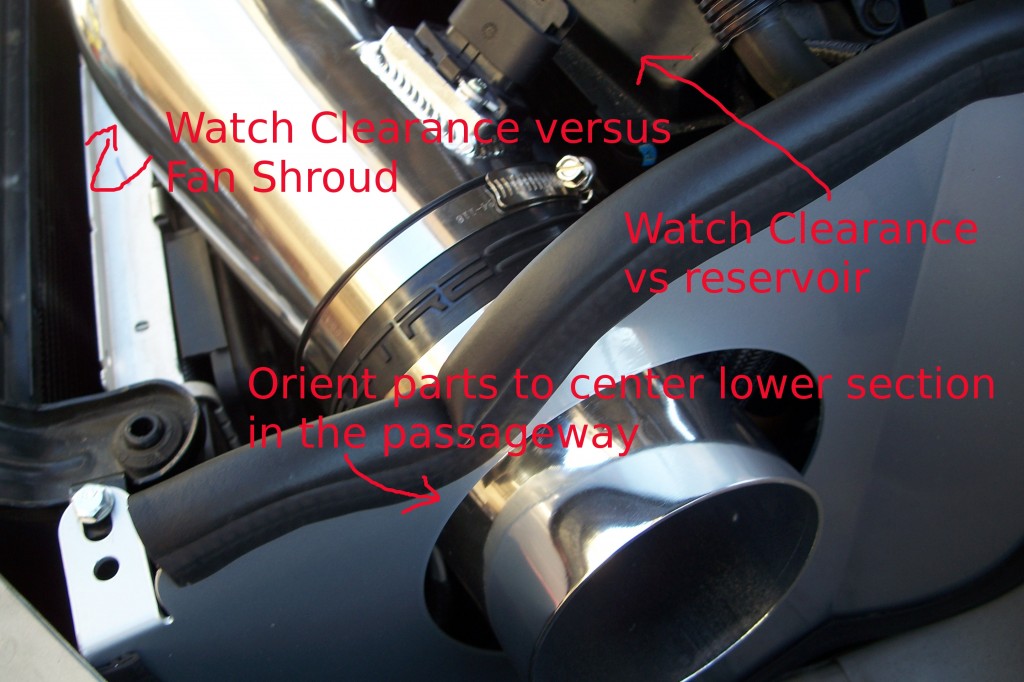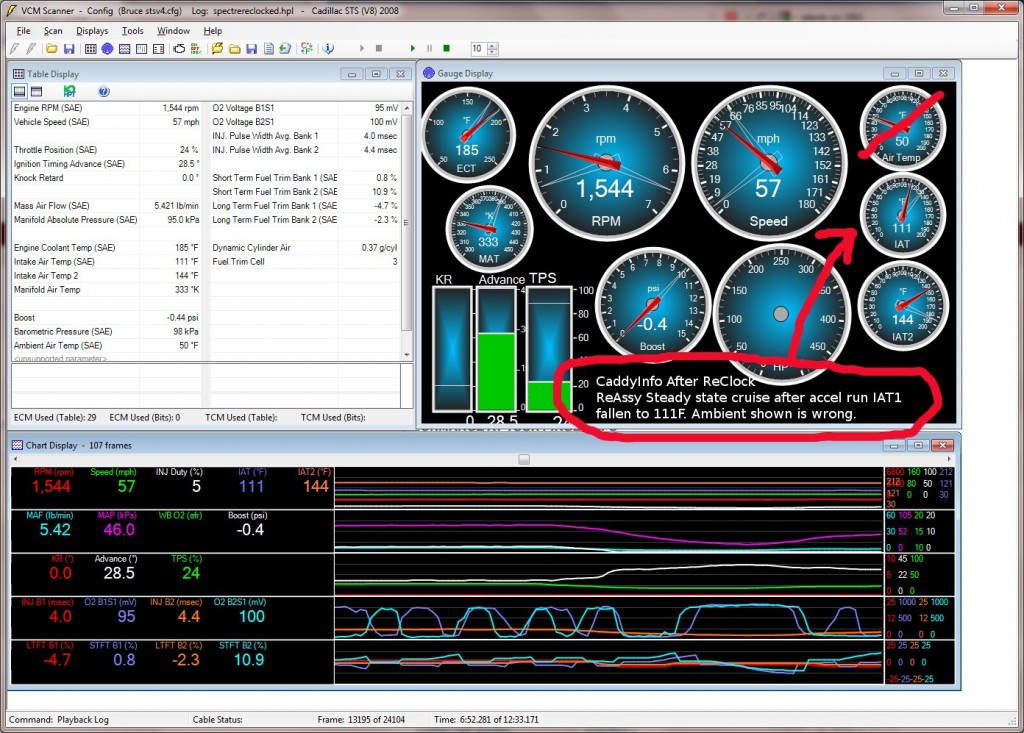I am continuing to study the effects and behavior trends for intake air temperatures (IAT) versus after the intercooler air temps (IAT2), versus Manifold Air Temps (MAT).
This graph is a tuner discussion taken from an .hpl download in this thread. It is not my STS-V, just interesting to see the data from this run. In the run the author was studying the relationship between MAT, IAT2, and the effect of IAT on timing advance (IAT Advance).
What this dash shows is a moment in time as the STS-V is about to shift from 2nd to 3rd gear at 6188 RPM and 64 mph. The IAT incoming air temperature is 79F, so a mild day.
The IAT2 is 117F, taken off the sensor. The MAT is a predicted value for the actual manifold temperature as follows:
ok there is some hidden logic here you cannot see, the IAT2 PID displays the raw IAT2 sensor reading. The IAT Spark table uses a prediction from the IAT2 reading that is meant to compensate for the slow moving IAT2 sensor. To predict IAT2 temperatures faster than the IAT2 sensor can actually measure them. Now for the happy coincidence: The MAT value is calculated from this predicted IAT2 value (using the usual Bias and Filter tables) and for your application the bias tables are all 0. Meaning MAT = Predicted IAT2.
So in other words, the IAT2 is useful, but the MAT perhaps reflects the value that the IAT Advance will use. What we see here is that the MAT temp of 109F the IAT Advance is 0 degrees.
Later in the run as the MAT goes up to 212F the IAT Advance falls as low as -3.2 degrees.
Summary:
MAT is perhaps as important as IAT2 in understanding the LC3 Supercharged V8’s responses to temperature over time. After adding MAT to the Table display in HP Tuners one can select F instead of the default of K degrees, and same for the gauges so that MAT shows apples to apples with the IATs.
Generally the MAT changes much more rapidly than the IAT2 value, which as described is the purpose of its use. It swings higher than the IAT2 max, but also recovers faster to lower temps.








